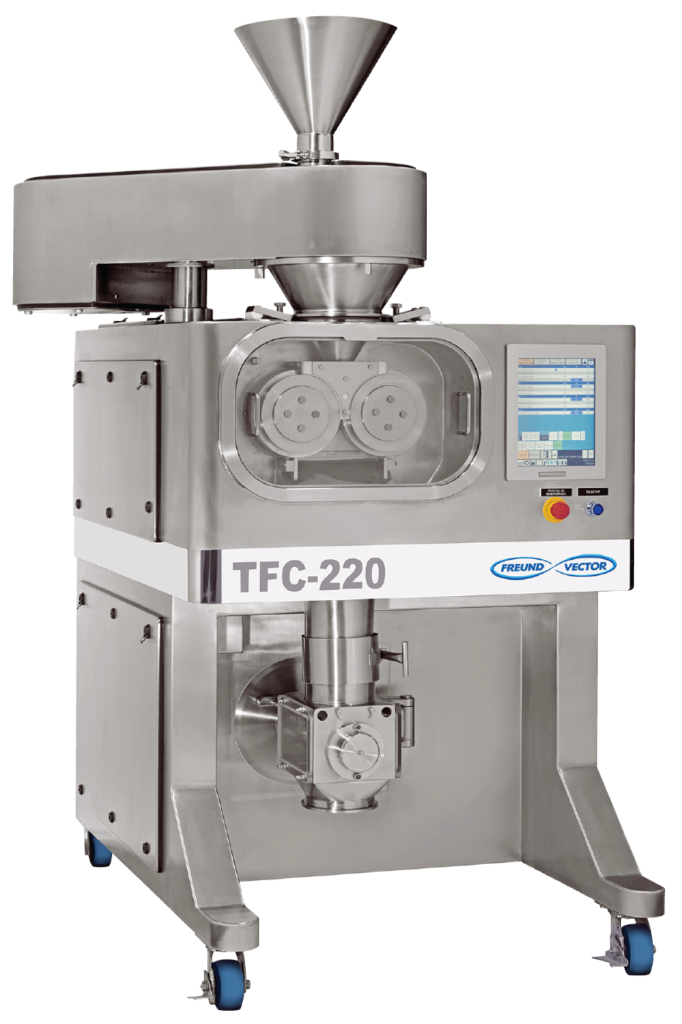On March 25-26, 2019, Freund-Vector through a joint partnership with Chemische Fabrik Budenheim KG, presented a poster at the 3rd European Pharma Congress in Bologna Italy on “Adjusting the Release Rate of Mesalazine from Matrix Formulations by Addition of various Excipients”.
The API used in this test was Mesalazine. The issue with Mesalazine is that’s its mostly supplied as very fine powder with extremely poor flowability, and wet granulation is most often used to meet the challenge. However, Mesalazine is prone to degradation by several pathways (e.g. oxidation to oxidation and forms quinoneimine), especially if brought into contact with water.
In the presented study it is shown that poorly flowing Mesalazine can be formulated into a prolonged release dosage form by roll compaction of the mixture containing a matrix former, such as HPMC and direct compression fillers. Moreover, the influence of several fillers on the drug release profiles in standard dissolution methods is compared to that in bio-relevant, mechanical stress simulating dissolution tests.
Marek Lachmann from Budenhiem used a Freund-Vector TFC 220 pilot scale roll compactor to perform the test. The test shows using roll compaction proved to be a versatile technique to obtain granules suitable for tableting purpose.

As a result, dry granulation of the powder mixtures increased the flowability from very poor (AOR around 62 °) to a passable flow (AOR around 40 °) for all mixtures. The bulk density was increased 2.6 fold.
Tableting yielded compacts that had a porosity between 11.5% and 12.3%, showing a breaking force between 73 N and 100 N and friability values between 0.2% and 0.3%.
To read the details of this report, please click here.
If interested in learning more about Freund-Vector’s TFC Roll Compaction technologies, please visit www.freund-vector.com or send an email to sales@freund-vector.com
